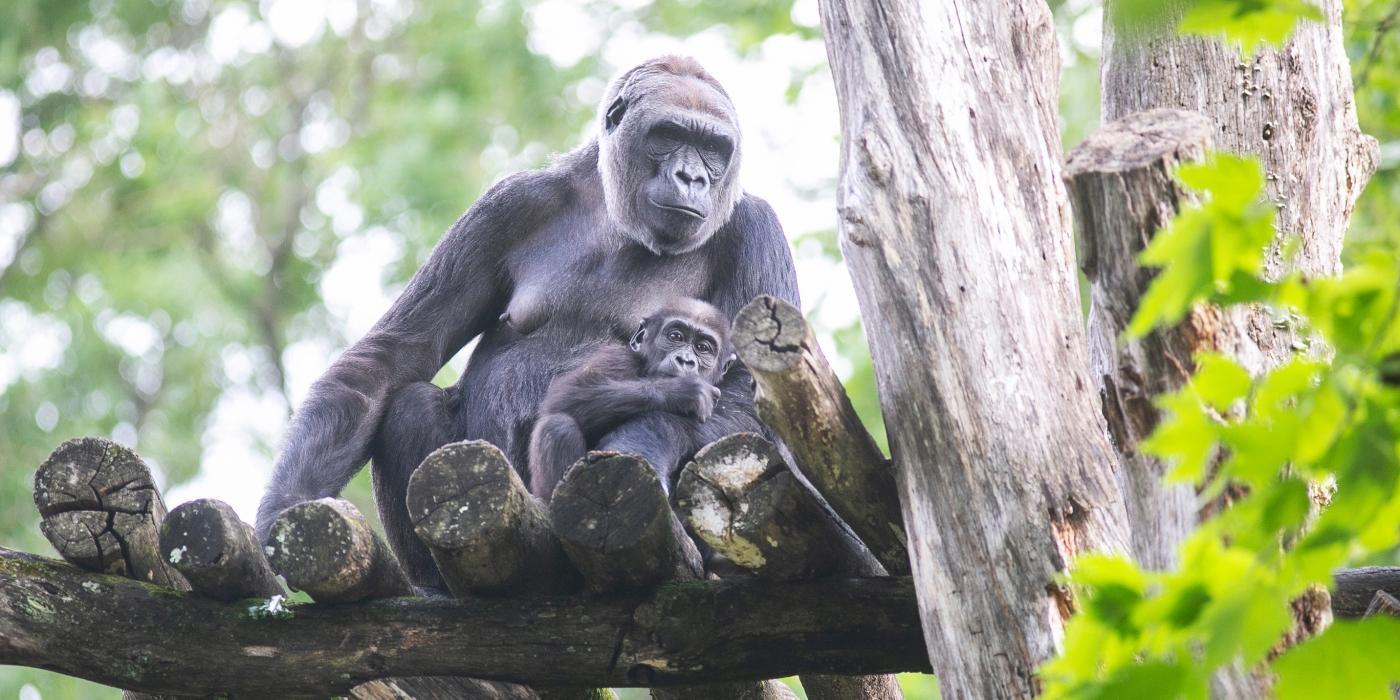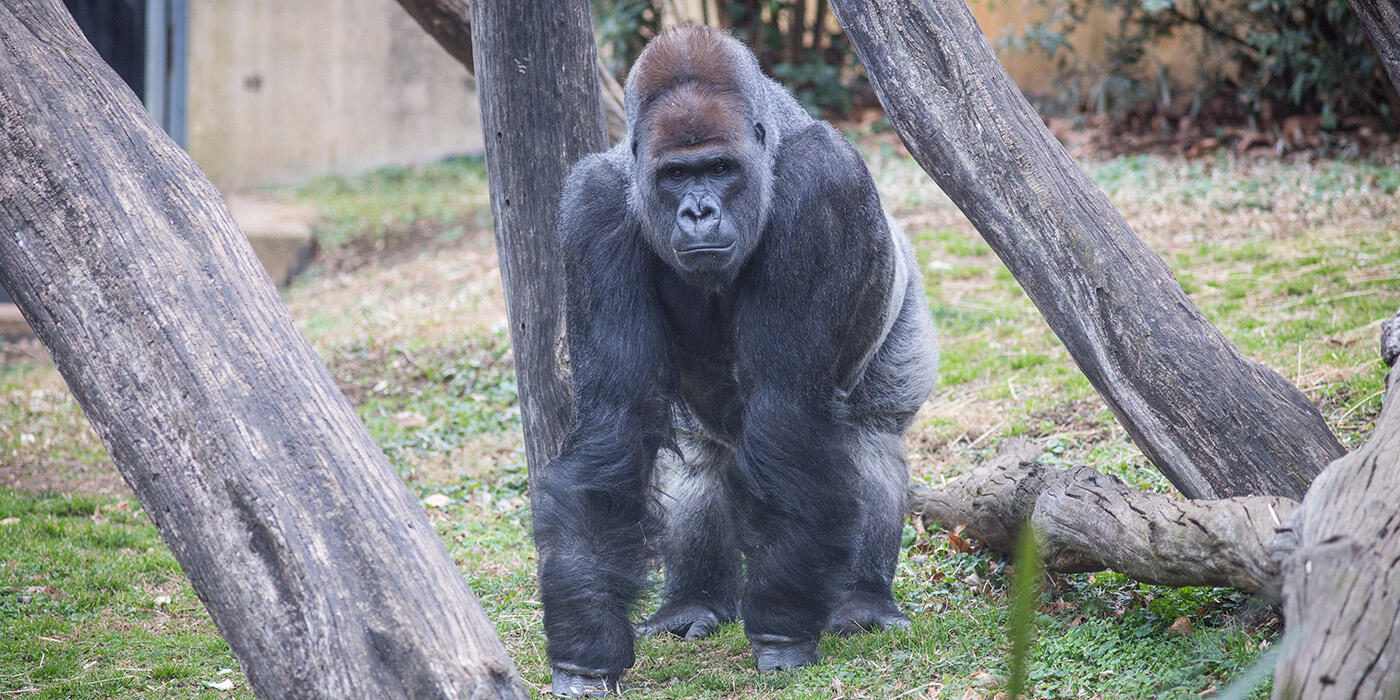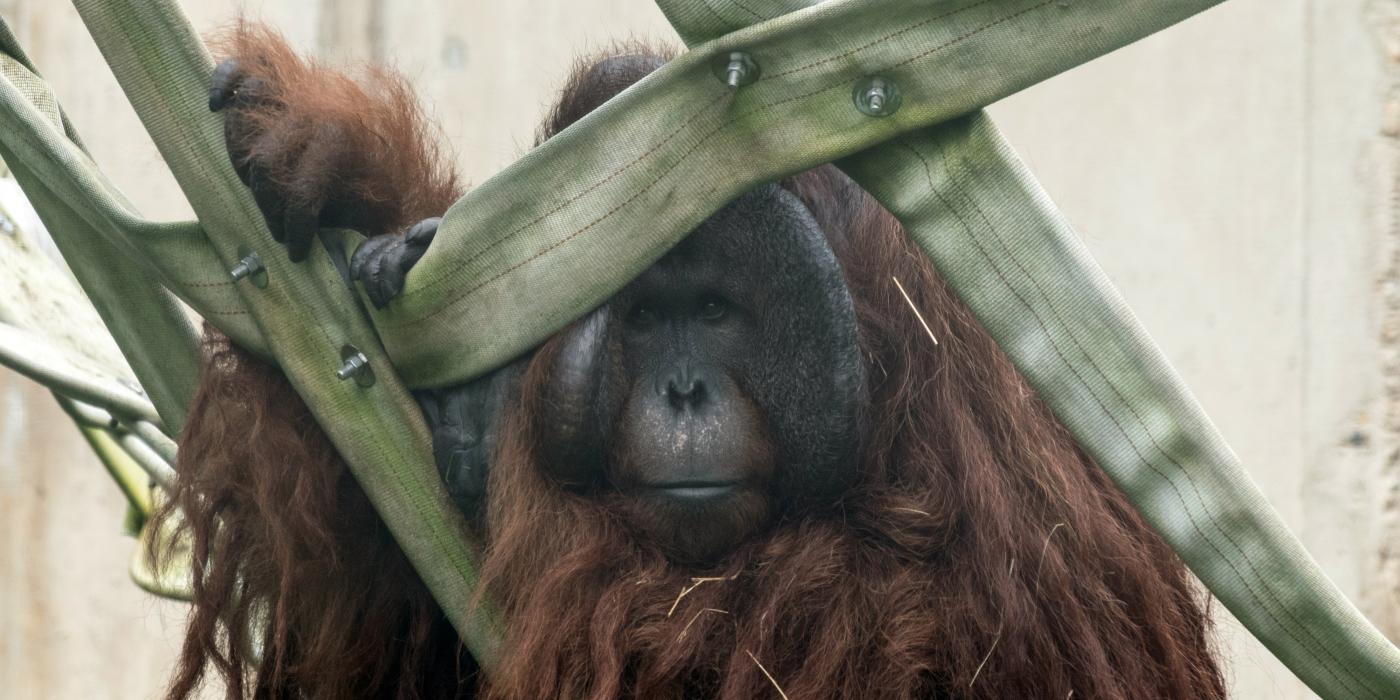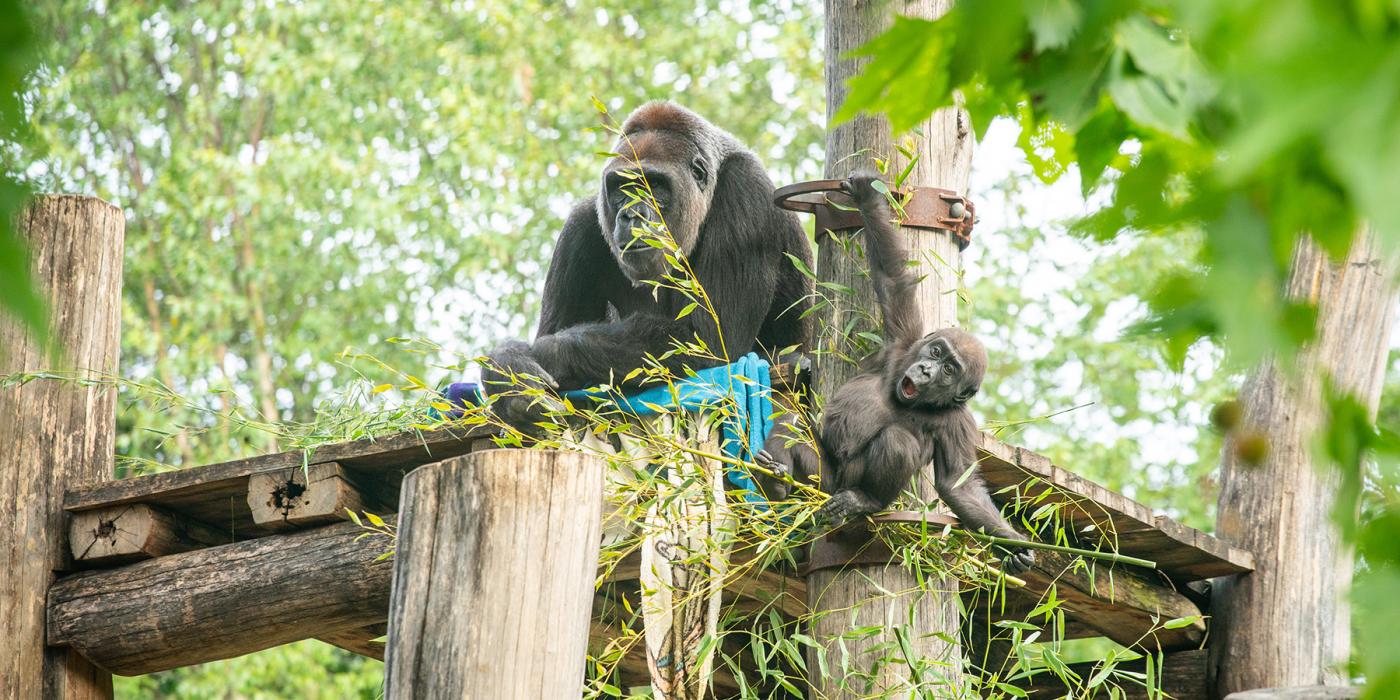#GorillaStory: Happy Mother’s Day, Calaya
For the past two years, the primate team has had the privilege of sharing the story of our western lowland gorilla infant, Moke, with Smithsonian’s National Zoo fans all over the world. With Mother’s Day coming up May 10, we thought we would highlight Moke’s very first friend—his mom, Calaya!
Calaya gave birth to Moke at 6:25 p.m. April 15, 2018. His name means “junior” or “little one” in the Lingala language
Calaya can be a tough nut to crack. As the dominant female of the troop, she helps keep everyone together. She is selective and nervous around new people, but I have enjoyed watching her come out of her shell and flourish into the beautiful animal I know her to be today. Our team affectionately refers to her as a “gorilla’s gorilla,” which means she is much more at ease around her troop than she is with our animal care team. This trait makes any moments when she reciprocates positive attention toward us all the more special.
Every day that I work with Calaya, I learn something new about her personality. She is not shy about showing off and enjoys being encouraged whenever she is in a playful mood. She will spin, roll around on the ground, clap and put enrichment toys on her head. Calaya is truly entertaining to watch!
One common gesture that is unmistakable in gorillas is a “clap.” This action is frequently employed by Calaya, our gorilla mother, to indicate a desired reaction from Moke and Kibibi during their play sessions.
As Moke grows, Calaya has become more comfortable allowing him to explore on his own, though she remains protective of her son. When he interacts with his father, Baraka, best friend Kibibi or Kibibi’s mom, Mandara, Calaya observes from a distance. If ever Moke finds himself in a bind, or she senses any sort of danger, Calaya runs to the rescue. For example, when a helicopter flew lower than the apes are accustomed to over the Great Ape House outdoor yard, Calaya ran to Moke, scooped him up and sheltered inside until she felt it was safe to go back out.
In another instance, Moke was exploring the habitat and climbed very high up. Having got himself “stuck,” he started crying for help. Calaya and the rest of the troop immediately came to the rescue. Being the stubborn youngster he is, Moke climbed back up to that same area. Calaya, knowing what just happened, left her food and brought him down to prevent another mishap.
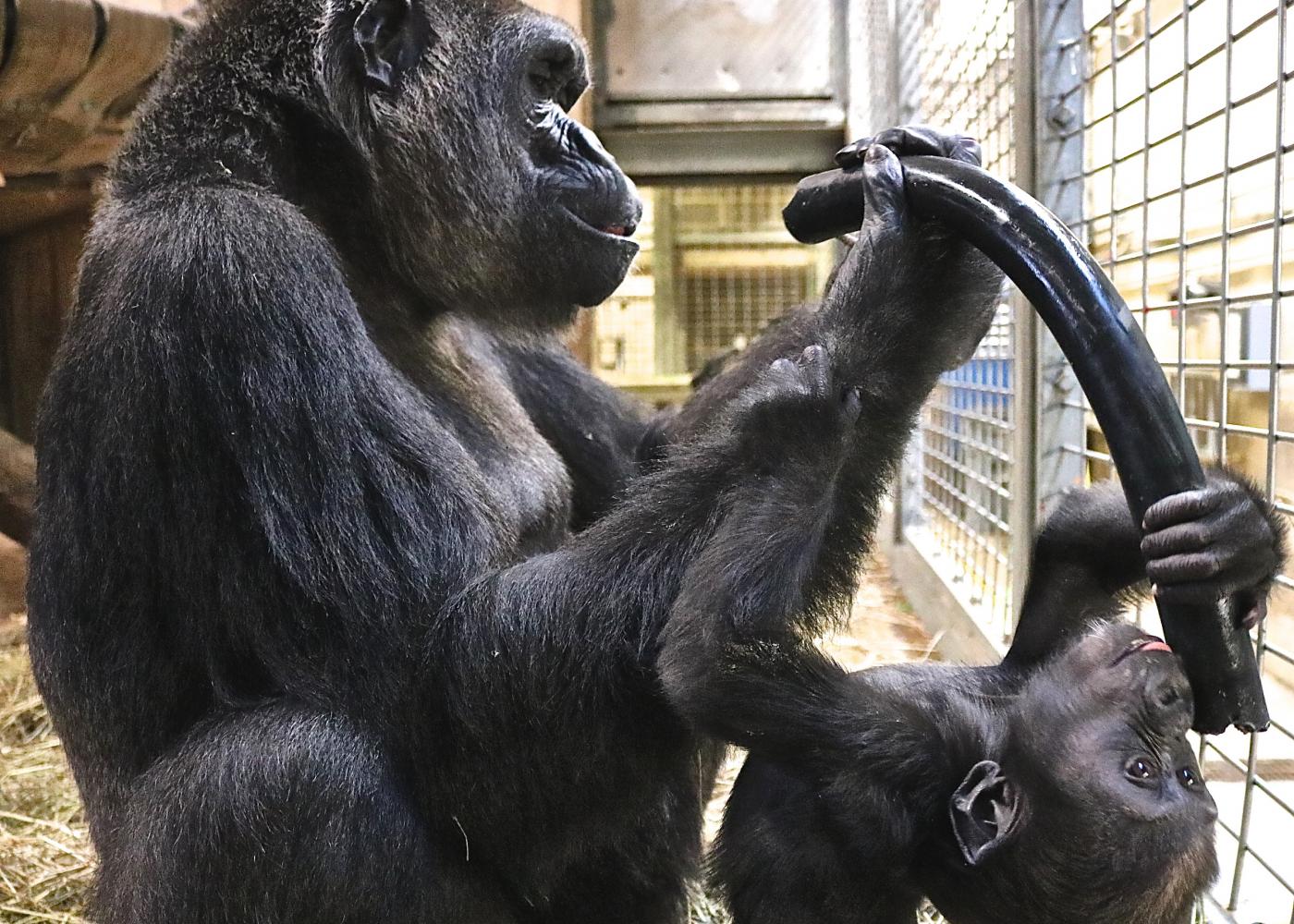
When it is time to call it a day, Moke cuddles close to Calaya, and she holds him as he falls asleep. Calaya nurses him daily, usually when Moke is ready to fall asleep or just wants some comfort. The majority of his diet is made up of fruits, vegetables and primate chow these days, though he still receives nutrition from mom’s milk, too. Young gorillas typically nurse until they are about 4 years old, so we expect Moke will do the same.
Moke learns quite a bit from observing his mother. One of her favorite enrichment items is a PVC tube filled with food, such as fruit or peanut butter. Since she is great at using tools, she can quickly figure out how to extract the tasty treats. Moke has picked up on those skills and is learning the ropes. Calaya makes very large, elaborate nests from alfalfa, hay, blankets and sheets, and Moke seems to enjoy making his own “mini nest” by piling up hay all around his body.
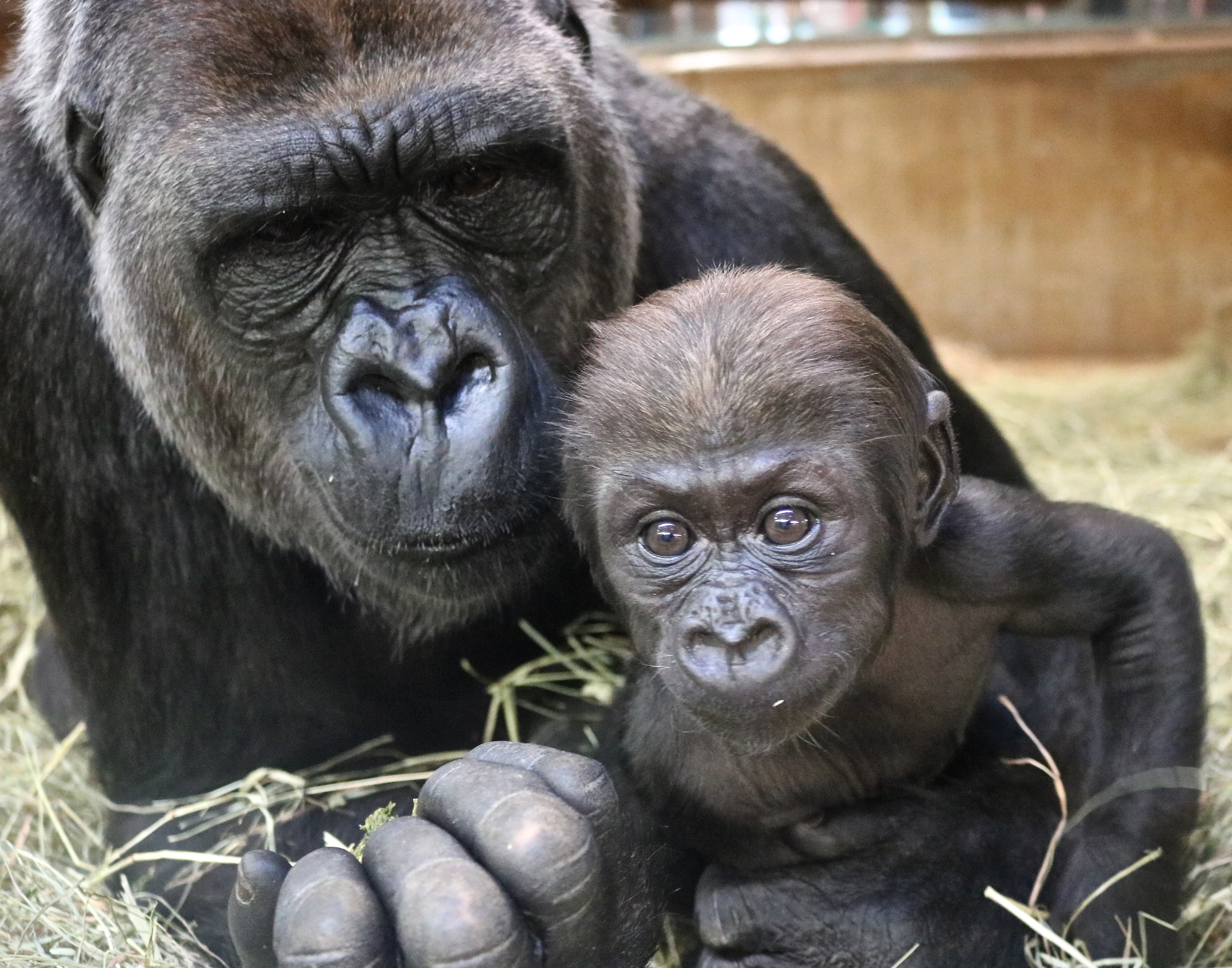
By far, though, one of the biggest traits Moke got from Calaya is his attitude! I have seen him get a little huffy—the way his mother does—with other troop members when they have something he wants. When the situation calls for it, however, Calaya will put Moke in his place. He seems to become more mischievous when his mom and I are in the middle of a husbandry training session. While her attention is focused on my cues, Moke will sit on her head, poke her in the nose, pull her eyelids or bite her fingers. When Calaya gets fed up with his antics, she makes a stern vocalization and gently nudges him away.
Husbandry training sessions enable us to monitor our gorillas’ health daily without the need for anesthesia. These interactions also help build Calaya’s trust in me as her keeper, which is a key component of being able to spot and treat any health issues that may arise. Participation in our positive reinforcement training program is voluntary, and the gorillas are rewarded with their favorite foods for doing the correct behaviors asked of them.
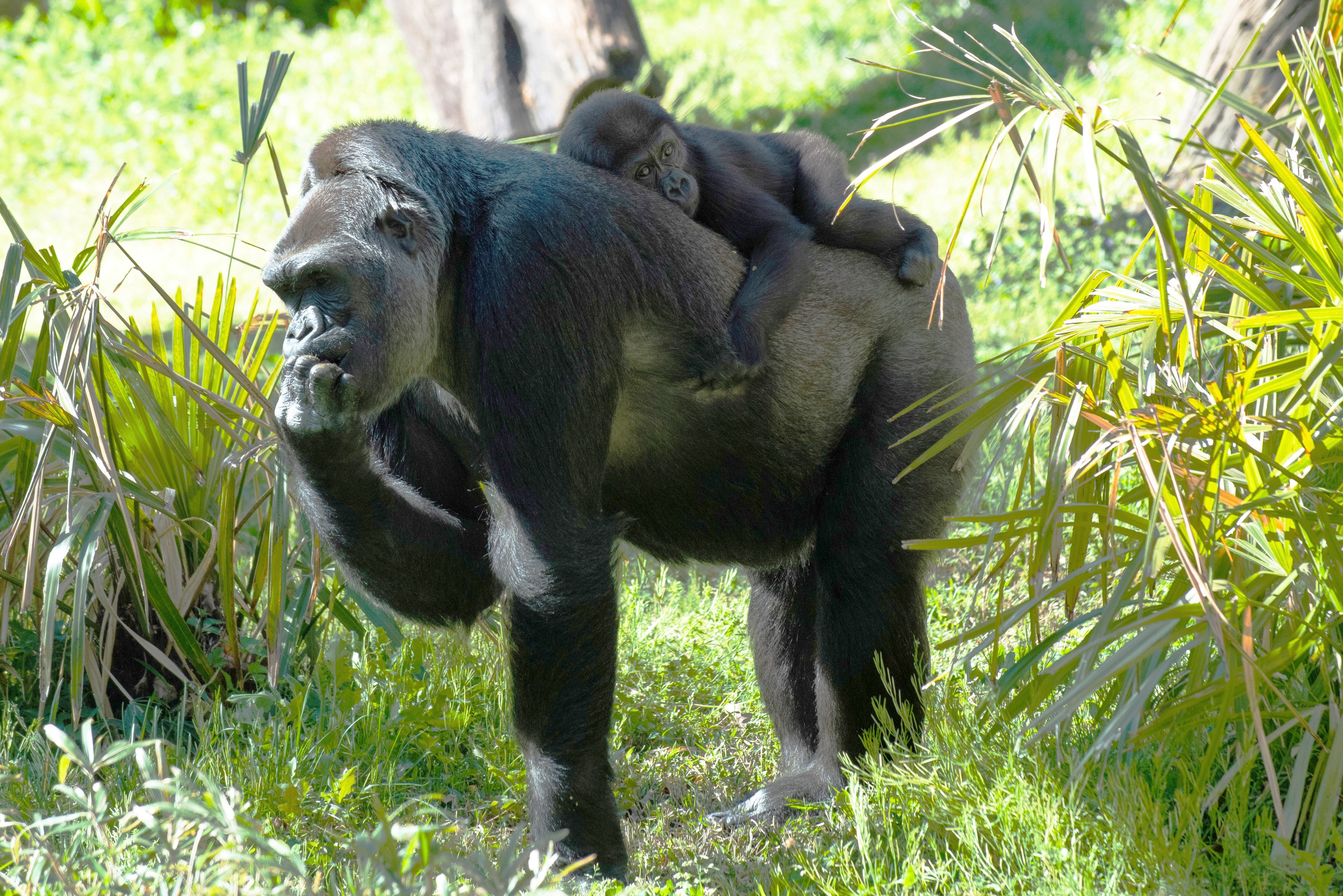
Calaya is incredibly food-motivated, which makes her a wonderful animal to train. I tend to use fruit that is part of her daily diet for her reward. This includes items such as apples, strawberries, kiwi, mangoes and oranges. I will also use peanuts when I am first training a new behavior.
Throughout the past year, Calaya has mastered many new husbandry behaviors, from simple cues such as “open mouth” and “present hip” to more complex ones such as presenting her chest or back for a cardiac ultrasound.
Calaya "innovates" by thrusting out her bottom lip!
Recently, we started a new behavior called “innovate”—a super fun cue that gives Calaya the opportunity to be creative with the behavior she wants to demonstrate. In this instance, I invite her to create any behavior she thinks of, as long as she doesn’t repeat it. Once she has gone through her normal repertoire, that’s when things get interesting. Occasionally, she comes up with behaviors that are completely new. Now, I have been able to put even more behaviors on cue—and she came up with them herself!
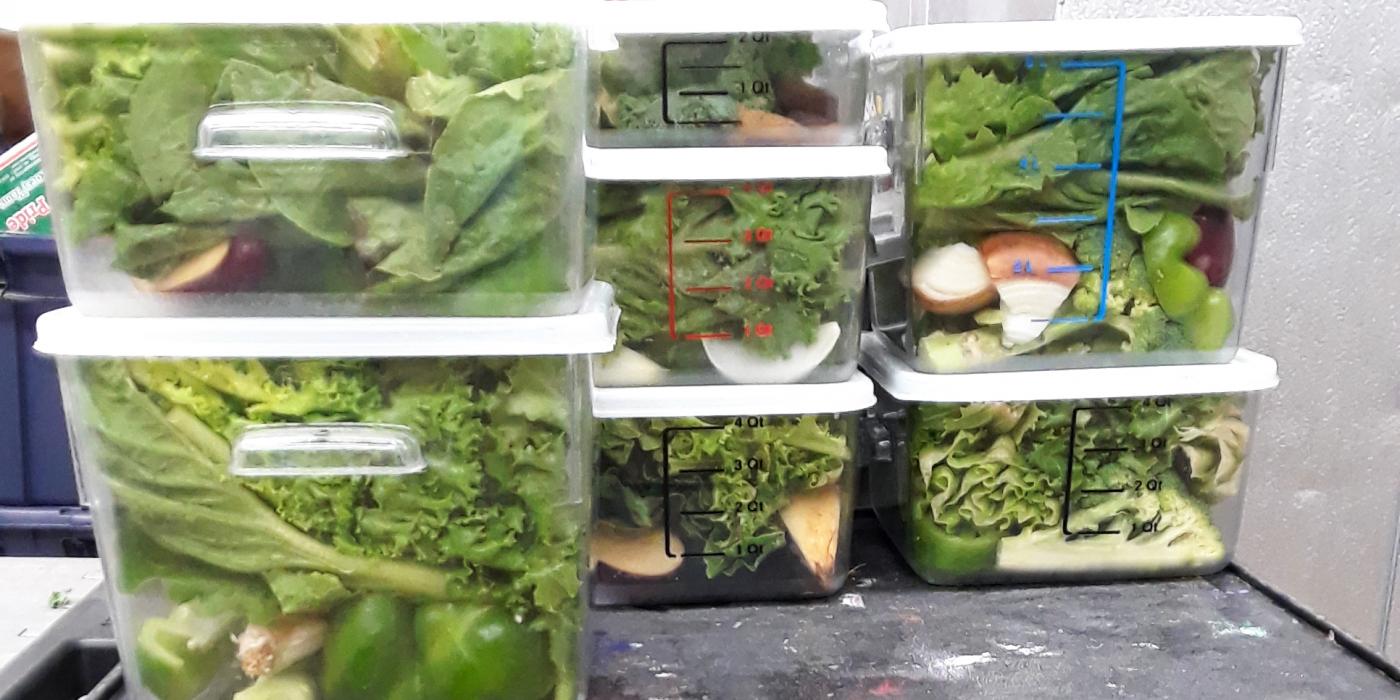
One of the rewards we offer our great apes during training sessions is diluted juice, administered via a squeeze bottle. When I first began working with Calaya, she was very wary of the bottle and didn’t want to come near it. To show her it wasn’t scary, I put mashed banana and peanut butter on the tip. With these added treats, she put her mouth on the spout. Over time, I used less and less food until the spout was bare. Then, I lightly squeezed until some liquid came out. Calaya tightly closed her eyes, but still drank. Sometimes, she would open one eye to peek at me, take a sip and then quickly step back. I’m not sure why she was so nervous about it in the first place, but our persistence paid off. I’m happy to say, Calaya has overcome that hurdle.
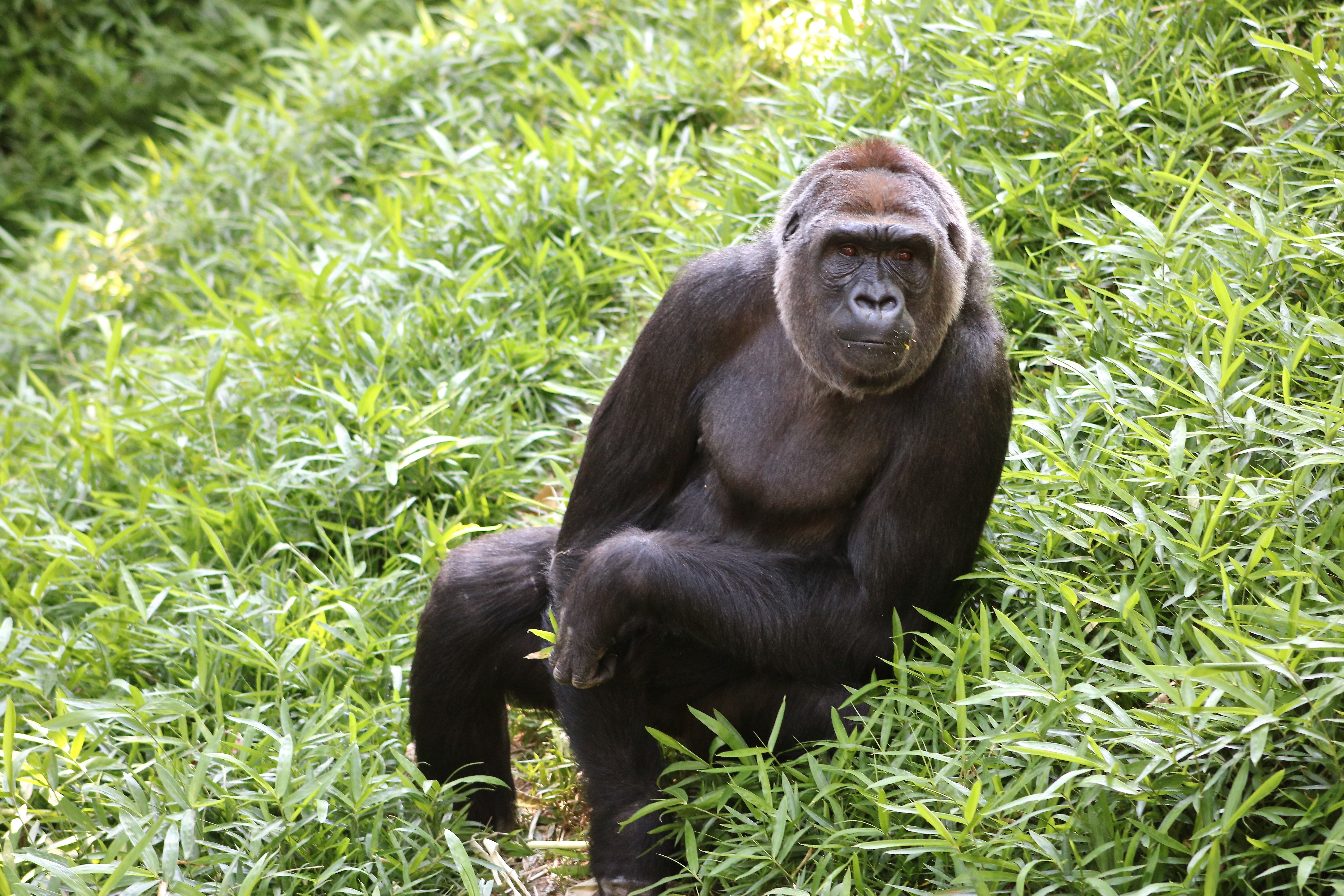
One behavior that Calaya and I continue to finesse is voluntary blood draw. While she is cooperative in presenting her arm, Calaya (like many of us) is a little nervous and hesitant around needles. In November, we were able to administer her flu vaccine via injection. The process went very smoothly, but I don’t want to push her too much. I work on this behavior monthly with her, and my goal is for her to be fully comfortable and at ease in the presence of a needle. Since injection training is a little tougher for her, I reward her with honey—our highest value reward—to show her that her hard work is worth the effort!
As my fellow keepers have highlighted in previous updates, Moke successfully participated in injection training last year. He was a champ and didn’t even flinch with the needle stick. However, since his attention span is quite short, he is not nearly as focused on the task at hand as mom is. That being said, they are both very intelligent and pick up on behaviors quickly. For now, the biggest milestone for Calaya will be continued injection and blood draw training. Moke is still so young, so he has lots of behaviors to learn and growing to do!
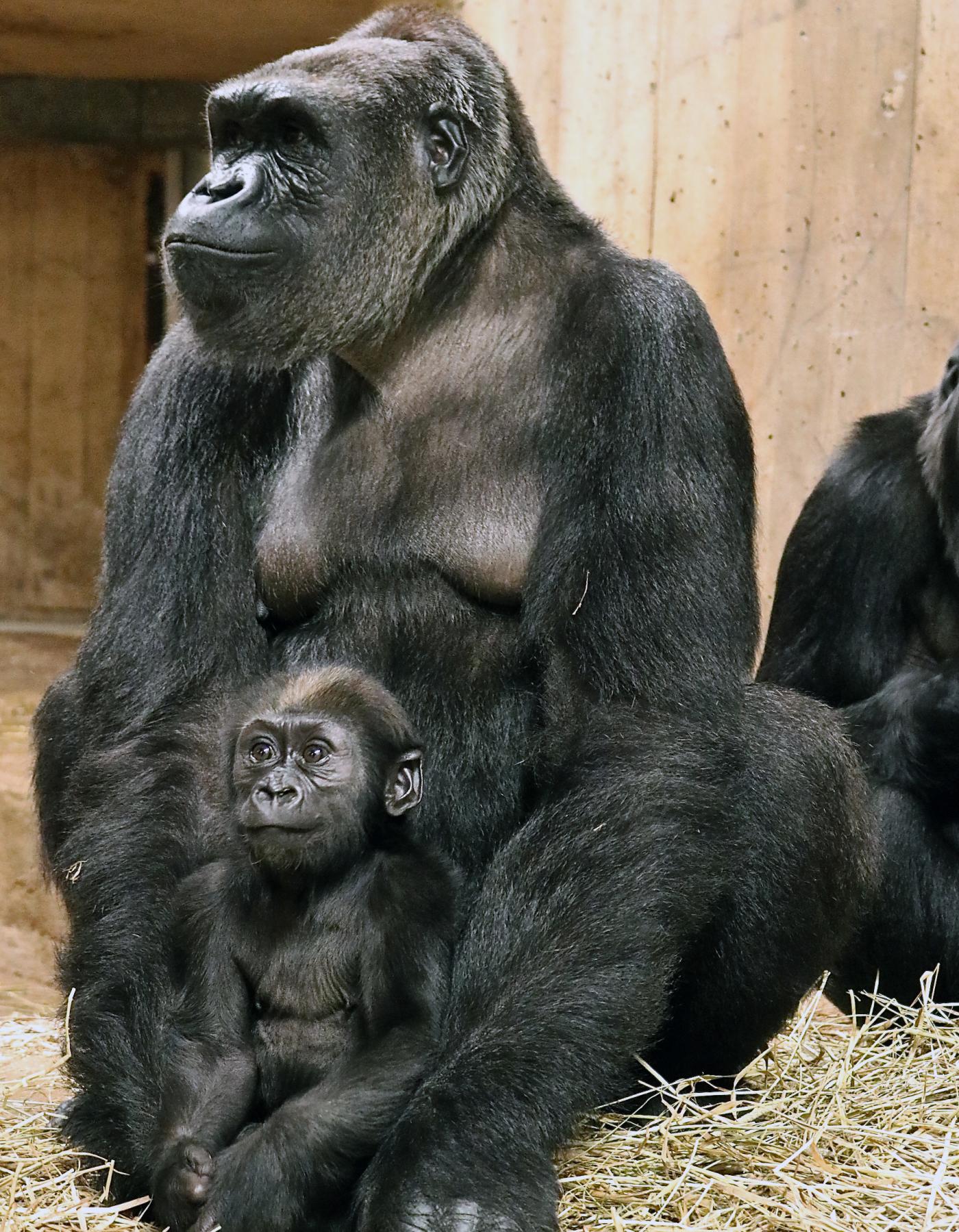
With Mother’s Day just around the corner, we are preparing to show our primate moms some love by giving them colorful, flower-themed enrichment along with some extra-special treats. (If you would like to give Calaya a gift for Mother's Day, you can do so by donating to our Enrichment Trunk.)
One way you can celebrate Calaya and all of our primate moms is by sharing ways to help their counterparts in the wild: recycle electronics (cell phones, tablets and computers); choose sustainable products and foods; and support organizations like ours that are contributing to conservation efforts in their native habitat.
Or, you could simply share Calaya and Moke’s story with a friend! Although the Zoo is temporarily closed at this time, we hope that these updates help you and your families stay connected to our animals and all of the great activities happening in the Primate unit. We look forward to seeing you when we reopen!
This story appears in the May 2020 issue of National Zoo News.
Related Species:

